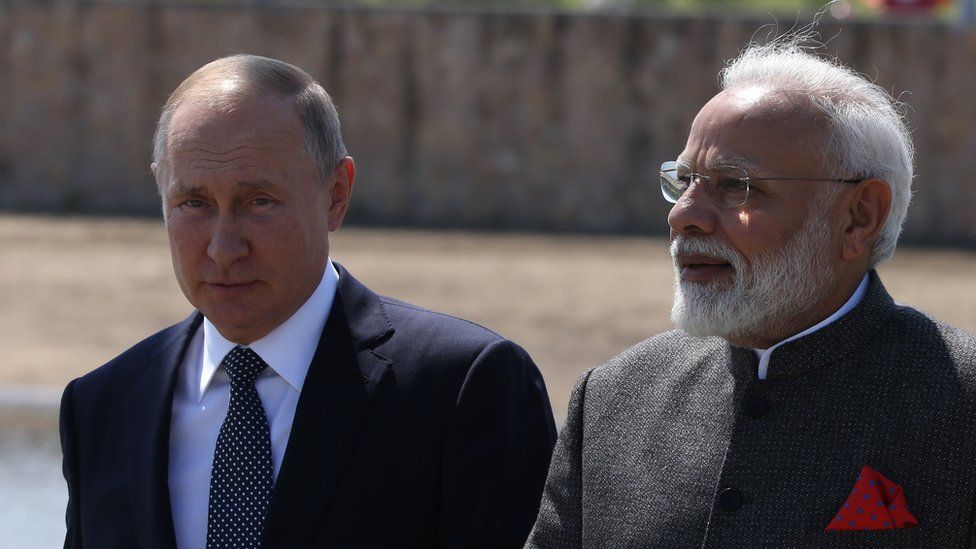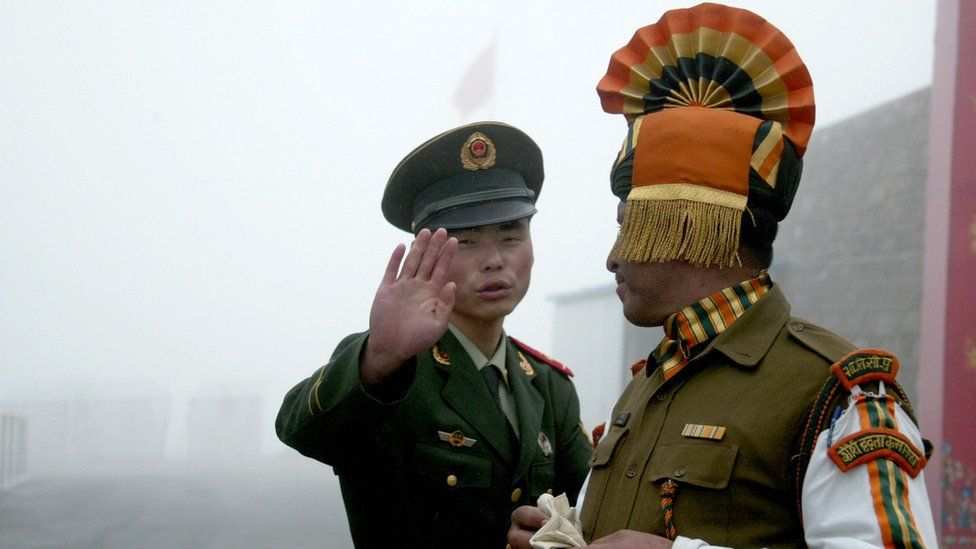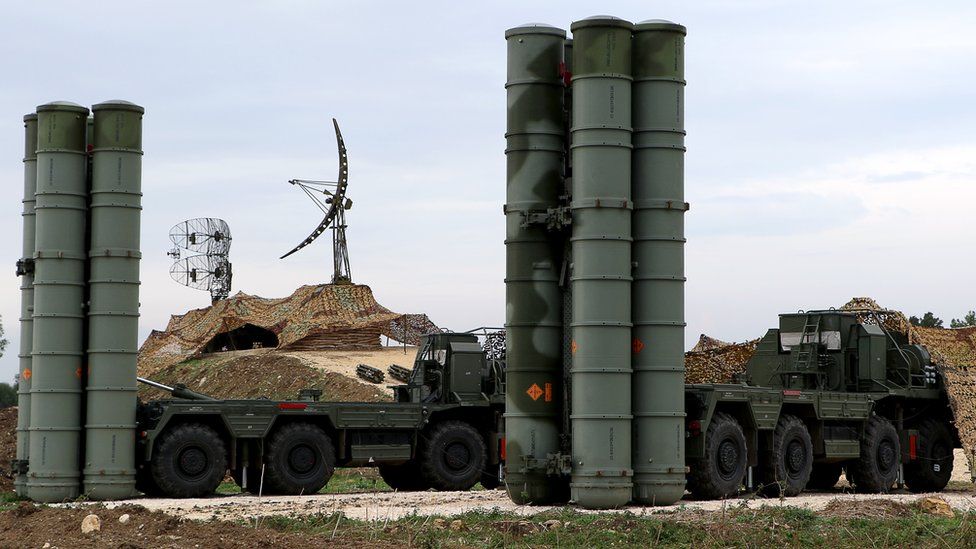Vikas Pandey

This "all-weather" partnership is one of the success stories of global diplomacy, and a high mark for Russian President Vladimir Putin and Indian Prime Minister Narendra Modi to live up to when they meet in Delhi on Monday.
But beyond the big-ticket defence deals, trade announcements, handshakes and Mr Modi's trademark hugs, the two countries will also have to overcome serious challenges.
And that is largely down to the different geopolitical choices the two countries have made in recent months and years. How they solve these issues will influence regional, and global politics.
India-US ties, and the China factor
Growing India-US relations is one irritant that has loomed large over Delhi-Moscow ties, more so in the past decade. Mr Modi even held a big rally for Donald Trump in 2020 when he visited India. It was a vibrant show of support for Washington.
Moscow largely overlooked such irritants even though its own relations with Washington steadily deteriorated in recent years. But Russian Foreign Minister Sergei Lavrov chose to speak openly when India joined the Quad - an alliance involving the US, Japan and Australia. The group said the Quad was a non-military alliance and wasn't aimed at a specific country, but Mr Lavrov didn't seem to agree.
He said the West was "trying to engage India in anti-China games by promoting Indo-Pacific strategies". Former Indian diplomat Anil Trigunayat, who served in Moscow, says that the Quad is a red line for Russia and this will most definitely be part of the discussions between the two leaders.
Moscow's worries about the Quad can be understood from its growing relations with Beijing in recent years. Mr Trigunayat adds that Russia has been compelled to forge closer ties with China to secure its economic and geopolitical interests in Asia as the US-led West also seeks to dominate the region.
China's deteriorating ties with the US also appear to have pushed Beijing and Moscow closer.
What complicates the matter further is that India-China relations have been recently tense - troops from the two countries fought a deadly clash in Ladakh's Galwan Valley with clubs and stones which left 20 Indian soldiers dead. China later accepted that some of its soldiers also died in the clashes.
 IMAGE SOURCE,GETTY IMAGESImage caption, India and China have a long history of border disputes
IMAGE SOURCE,GETTY IMAGESImage caption, India and China have a long history of border disputesMichael Kugelman, deputy director at the Wilson Center think-tank in Washington, says the new geopolitical realities pose a "potential threat to the India-Russia relationship".
In this context, Mr Putin's visit is important to uphold the special relationship. "I think for Russia, the objective in this case, is to reinforce the importance of Moscow's relations with New Delhi, even as the geopolitical signposts suggest otherwise," Mr Kugelman adds.
But analysts, including Mr Kugleman and Mr Trigunayat, feel that the foundations of the relationship between the two countries are strong enough to address each other's concerns.
The countries have several areas where they can and will look to cooperate - Afghanistan is one of them.
It will most definitely be part of the discussion as Delhi tries to stay relevant in Afghanistan. Pakistan, India's neighbour and archrival, now has better strategic depth in Afghanistan as it appears to have formed an informal alliance with Russia, Iran and China.
Moscow can help Delhi recover the lost ground in Afghanistan as the two have shared concerns about the future of the country.
"Both Russia and India are wary of the Taliban and the Haqqani Network, and the potential for terrorism coming out of Afghanistan and impacting their countries, So, Afghanistan really is an area of strong agreements between New Delhi and Moscow," says Derek Grossman, senior defence analyst at the US-based RAND Corporation think-tank.
India and Russia are already partners in several multinational forums like Brics (also involves Brazil, China, South Africa), the Shanghai Cooperation Organization (also involves China, Pakistan and Central Asian countries) and the RIC (Russia, India and China).
These forums give an opportunity to Moscow and Delhi to work together closely on both bilateral and global issues. And given China is a member in these forums, Moscow can use its influence, even if it's not done publicly, to ensure both Beijing and Delhi continue to engage with each other to maintain peace at their disputed border.
Trade and defence
The showpiece of the visit is likely to be the delivery of the Russia-made S-400 missile defence system to India. It's is one of the most sophisticated surface-to-air defence systems in the world. It has a range of 400km (248 miles) and can shoot down up to 80 targets simultaneously, aiming two missiles at each one.
The system gives India crucial strategic deterrence against China and Pakistan, and that is the reason why it went ahead with the order despite threats of US sanctions.
Washington has put several Russian firms under sanctions. The Countering America's Adversaries Through Sanctions Act (Caatsa) was introduced in 2017 to target Russia, Iran and North Korea with economic and political sanctions. It also prohibits any country from signing defence deals with these nations. While the deal may create tensions between the US and India, Moscow appears to be satisfied with Delhi's stand.
 IMAGE SOURCE,AFPImage caption, The S-400 is one of the world's most sophisticated missile defence systems
IMAGE SOURCE,AFPImage caption, The S-400 is one of the world's most sophisticated missile defence systemsIt will be interesting to see how India balances ties with the two superpowers under the shadow of the S-400 deal. Indian diplomats feel the decision to buy S-400 also upholds India's famed practice of "strategic autonomy", adding that the US should respect that. Mr Trigunayat adds that India's large defence budget also gives it strategic advantage. "Most global relationships are transactional and it's true for Moscow and Delhi as well," he adds.
India is the world's second largest arms importer, accounting for about 10% of global defence trade, according to a report by the defence think-tank Sipri. Moscow continues to be India's largest arms supplier even though its share has dropped to 49% from 70% due to India's decision to diversify its portfolio and boost domestic defence manufacturing.
The US was India's second-largest supplier between 2011 and 2015 after Russia but it fell behind France and Israel in the period between 2016 and 2021. Washington would want to do better and analysts say that gives India leverage.
Russia will also try to boost its defence export to India and some major deals could be announced on Monday. However, commercial trade between the two countries has remained far below their potential. Bilateral trade in 2019 (pre-pandemic levels) stood at $11bn and it was skewed in Russia's favour as it exported goods and services worth $7.24bn, according to a report from the Indian government. In comparison, India-US bilateral goods and services trade stood at $146bn in the same period.
Russia and India have now set a target of reaching $30bn in bilateral trade by the end of 2025. They will look to diversify their portfolio and go beyond energy and minerals. Education, cyber security, agriculture, railways, pharmaceuticals, and clean energy are some of the other areas they are likely to focus on.
India's decision to give $1bn line of credit to businesses to invest in Russia's Far East region will also help boost trade between the countries. Talks are also expected on the proposed Chennai-Vladivostok maritime corridor. The route will open more business frontiers.
Talks over a free trade agreement between India and the Russian-led Eurasian Economic Union are also likely to progress. If the deal happens, it will help businesses move goods easily between the two regions.
"As long as trade, defence deals stay relevant, the two nations will find a way to sort out their geopolitics differences," Mr Kugelman adds.
No comments:
Post a Comment